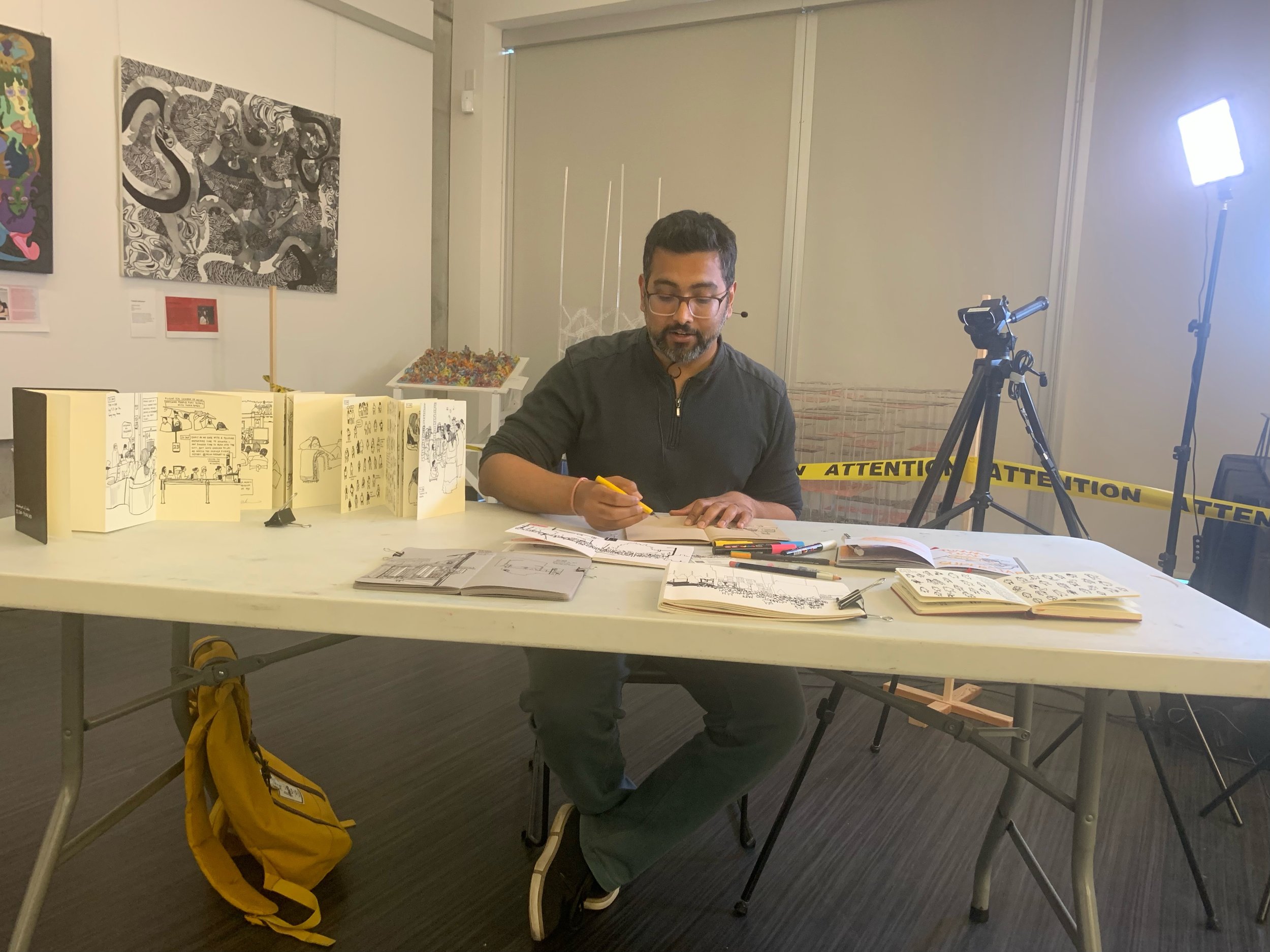A Drawing is Not a Moment in Time
Last week, I showed my sketchbooks and talked about my art journey at a meeting of a local arts society. Poring through the pages, an attendee asked this question:
“If the people are moving about all the time, how does your drawing accurately capture the moment?”
I had to think about my response because there are so many interesting ways to answer the question. It is innocuous yet deeply insightful. It involves one of my favourite things to ponder - the passage of time.
Time Passing
I think about time a lot. You could say, I spend a lot of time thinking about time. Which is interesting, because old ideas and new discoveries both conclude that thought itself is time. So there’s a strange loop in passing time thinking about the passing of time which leads to … time passing.
In India, when you do something for no good reason, it is called time-pass. Often bad movies are described this way. How was the movie? Is it worth watching? Oh, no. But it is time-pass. The idea that an experience that does not change your life in any way at least helps pass some time.
More than 2000 years ago, Aristotle was also thinking about time. Without fancy instruments or decent wi-fi, he concluded that time passes in observable change. How much time has passed can be measured by the decay of things - a candle, an animal carcass, a flower, the moon etc. It was a different world back then. Everyone and everything lived on their own time.
Consider this quote by Heraclitus, a couple of hundred years before Aristotle:
“No man steps in the same river twice. For it is no longer the same river, and he is no longer the same man.”
The idea of a universal time did not always exist in the popular imagination. Thanks to phones, and time-zones, and wi-fi connections, and productivity coaches, today it is how we popularly imagine time. This is a pity because Aristotle was actually right. Innately, all of us understand this. Time is relative. Time is personal. Time is local.
Einstein made big moves to explain this, asking people to go on a hot date or sit on a hot stove and compare how quickly (or slowly) time passes. My favourite book on the subject is The Order of Time by the physicist-writer Carlo Rovelli. If you have followed this post until now without hitting the delete button, you are ready to read this book too.
“How does your drawing accurately capture the moment?”
It does not, I answered. A drawing, even when made from direct observation, does not capture a moment in time. It is much more creative and powerful than that.
A drawing encapsulates the totality of all the time spent drawing at a location. The drawn scene is not a moment, but a timelapse video on paper. It captures the evolution of the scene, and the shifting of the light. A drawing in a busy city accurately represents the activity of people without being true to any single moment.
Continue reading for connections to Quantum Gravity, Impressionism, and drawings of baby Rohan…
